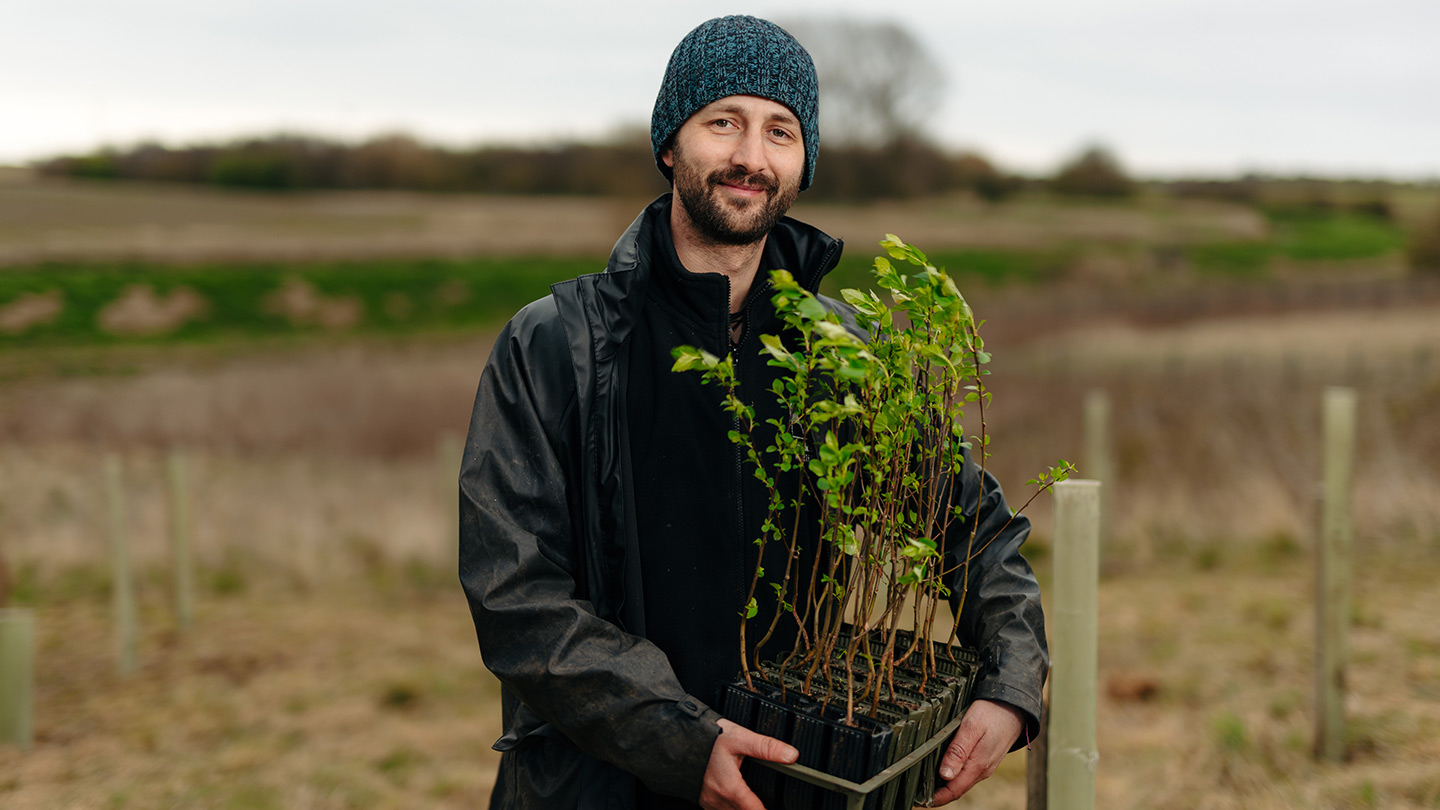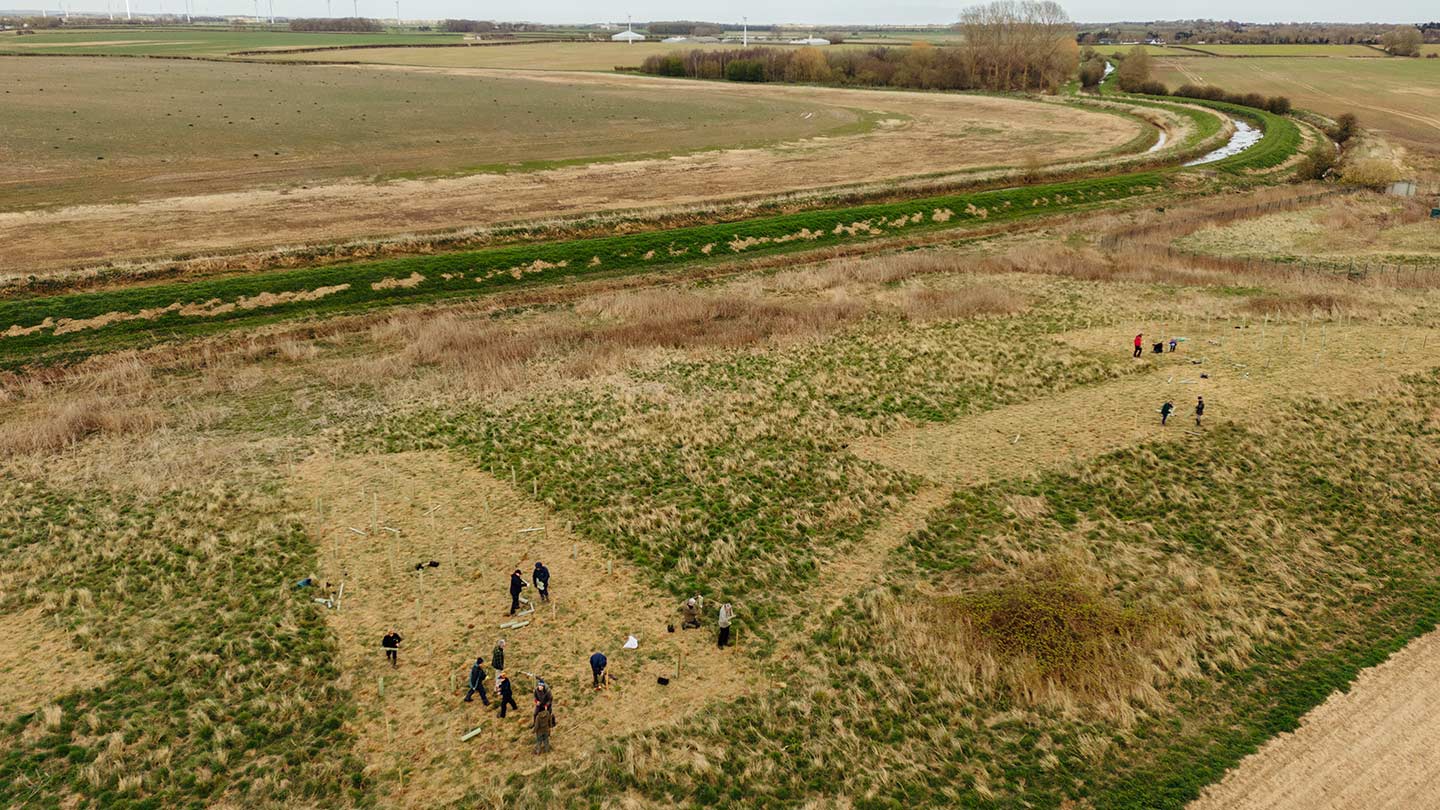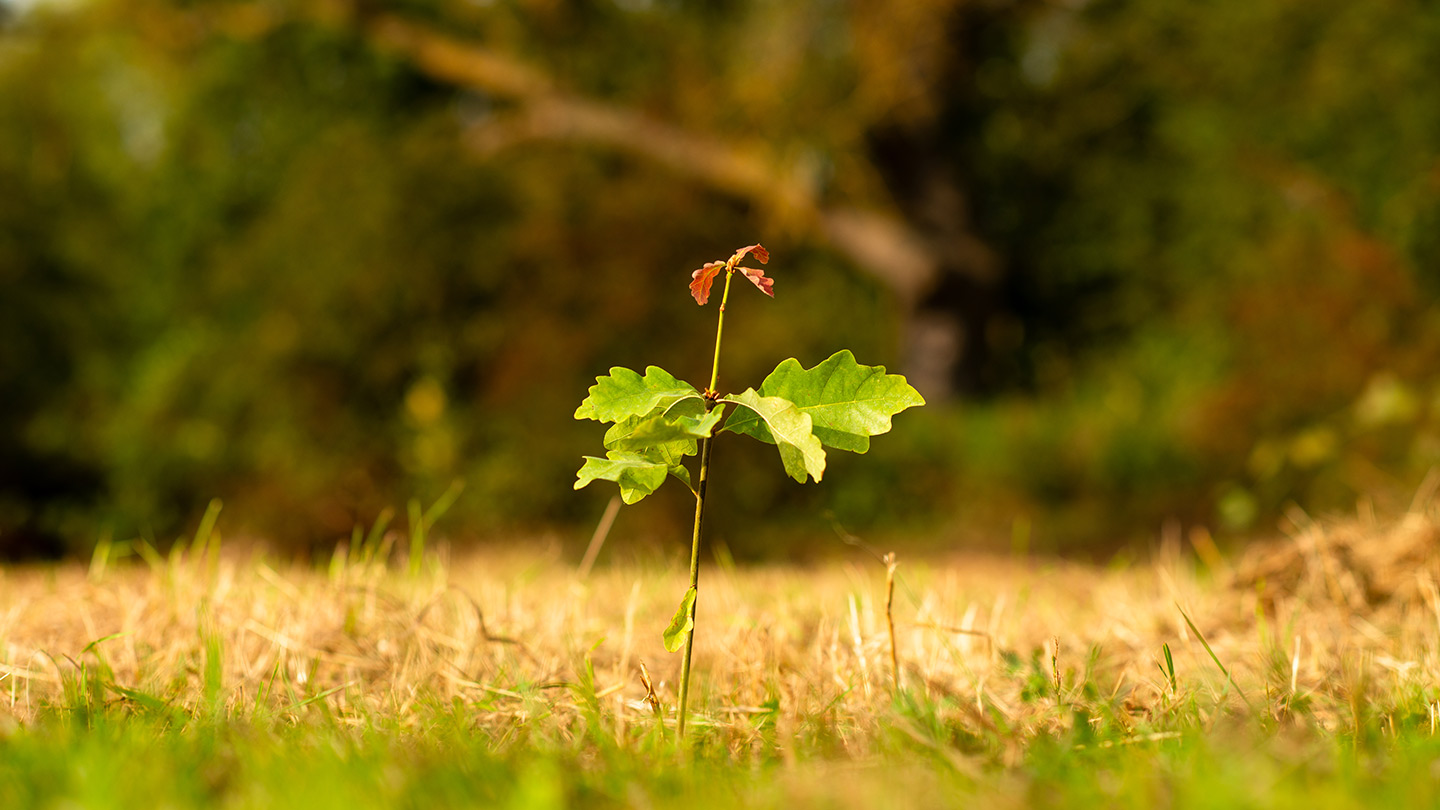Hull Valley: restoring woodlands in East Yorkshire
The headwaters of the River Hull play a vital role in local water management, making them a priority area for conservation. The landowner at North Frodingham wanted to create a new woodland to help nature recovery, protect the sensitive River Hull headwaters and encourage other landowners to become involved. Jon Traill from the Yorkshire Wildlife Trust helped to identify an area to introduce planting, and the team at Humber Forest provided the funding and expertise to help bring it to life.
The result is a new 0.45-hectare woodland with a total of 810 trees and shrubs. The new woodland was planted by volunteers using reused tree guards to reduce the carbon footprint. This project has also enhanced a wildlife corridor, with a variety of species joining the area with nearby woodland.

Staff from Yorkshire Wildlife Trust and Humber Forest worked together to create the new woodland. Credit: Humber Forest
The right species at the right site
Following an ecological assessment, the planting design was carefully planned to make sure it could accommodate the existing grassland and marsh areas. Key considerations included:
- Avoiding peatlands - a peat survey confirmed no peat presence, so the planting would not damage a valuable carbon sink.
- Open ground and shaped edges - this was included to maximise biodiversity and create microhabitats for insects and birds.
Jon Traill from the Yorkshire Wildlife Trust explained:
“By working closely with the landowner we have put in place a lovely addition to the farm and a future habitat for wildlife. The shape and edge effect will enhance the site and slow down any run-off from the fields above.”

Volunteers helped to plant a total of 810 trees over a two-week period. Credit: Humber Forest
Positive impact
Natural flood management and water quality
The site is on a slope adjacent to a cultivated field. Tree roots stabilise the soil, mitigating flood risk and reducing run-off from the surrounding arable fields.
Enhancing wildlife and biodiversity
The woodland extends existing habitats, increasing connectivity for birds, pollinators and mammals. Open areas and shaped edges create microclimates that support a wide variety of species.
Supporting net-zero goals
The woodland is expected to sequester approximately 200 tonnes of carbon, contributing to climate resilience in the region.
Community health, engagement and wellbeing
Volunteers from the Yorkshire Wildlife Trust were actively involved in both planting and maintenance of the woodland. This benefits their health and wellbeing, and fosters a sense of community and environmental responsibility among the group.
Employment and skills
Yorkshire Wildlife Trust staff have been involved with the planning and management of this project throughout. It has improved their woodland creation skills and given them experience to take to future woodland creation projects.
A model for sustainable woodland creation
By combining careful site planning, conservation expertise and community engagement, this woodland project sets a blueprint for future nature-based solutions in the Hull Valley and beyond.
Be part of the Northern Forest
Want to plant trees? Whether you’re creating new woodland or extending an existing site, you can reap a whole host of extra benefits.
- Boost biodiversity.
- Provide shelter.
- Protect your soil.
- Fight flooding.
Your new trees could be part of the Northern Forest and make a difference for people, wildlife and the environment in the North of England.

Credit: Phil Formby / WTML
Get started today
Speak to an expert adviser from any Northern Forest partner for no obligation advice and support.